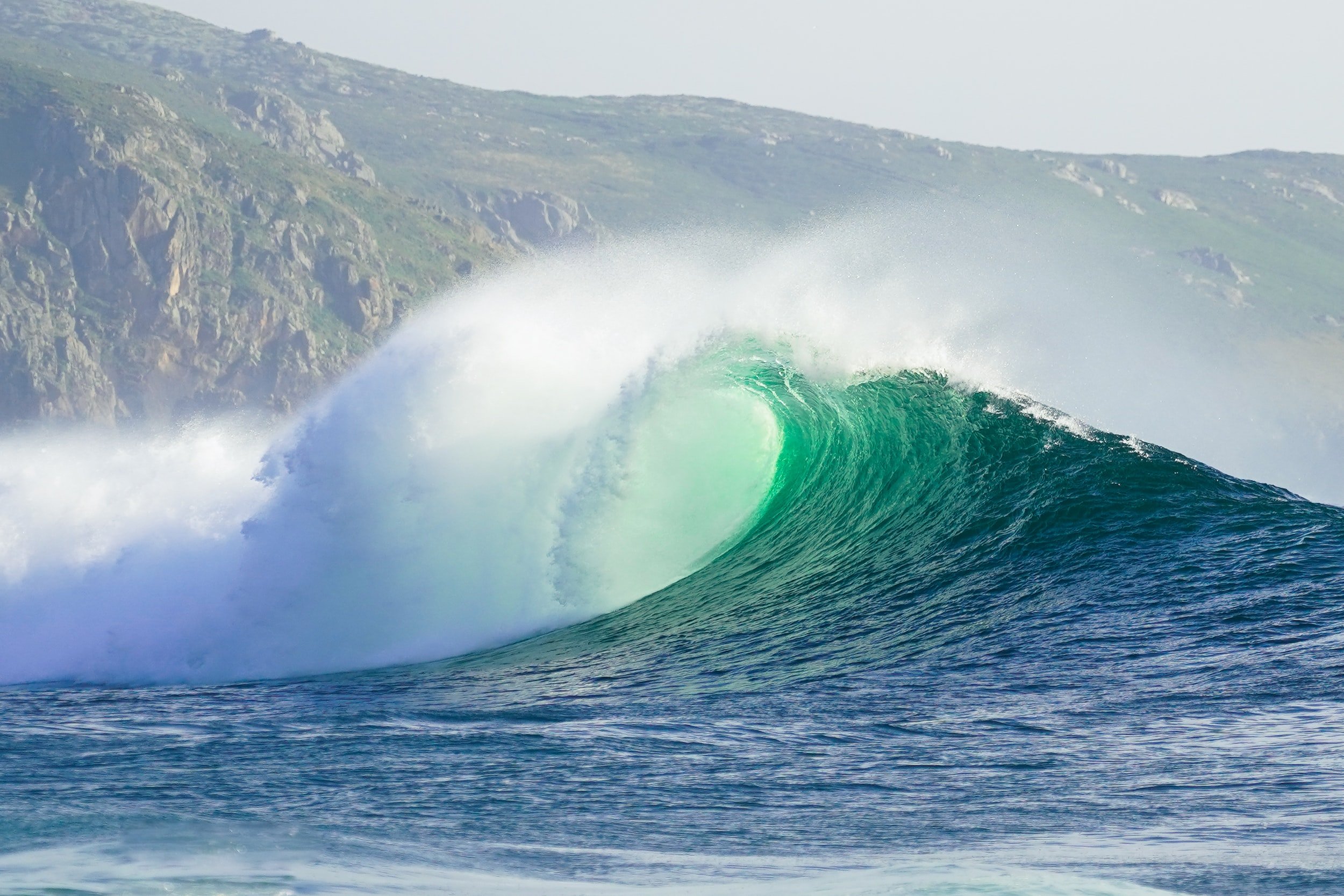
At Surf Education Academy, we believe surfing isn’t just about riding waves—it’s about respecting and protecting the ocean we call home. If you’ve been looking for sustainable surfing tips that you can use in your own surf sessions—whether you’re a beginner at La Jolla Shores or a seasoned wave rider—this guide is your starting point.
The choices we make before, during, and after a surf session ripple far beyond the shoreline. From the sunscreen we use to how we get to the beach, every decision can either harm or help the ocean. And here in San Diego, where La Jolla Shores sits at the heart of a Marine Protected Area, those choices matter even more.
Why Sustainable Surfing Matters
The ocean gives us everything—waves, beauty, community—and it’s under pressure. Plastic pollution, coral reef bleaching, and overfishing are just some of the threats marine environments face daily. Surfers, more than most, see the changes up close: trash floating in the lineup, kelp beds thinning, and water quality warnings after storms. If you haven’t yet, go watch something on “Trash Island” and be amazed how much pollution forms a floating pile of trash the size of Texas!
Sustainable surfing is about more than “being green”—it’s about preserving the sport for future generations. It’s about knowing that the kid catching their first wave at La Jolla Shores 20 years from now will still find clean water, thriving kelp forests, and healthy marine life.
Here in La Jolla, we’re lucky: the waters are part of the La Jolla Ecological Reserve, one of California’s most biodiverse marine areas. That means dolphins, leopard sharks, Garibaldi, and sea lions share this coastline with us. Sustainable surf practices ensure that sharing stays balanced, respectful, and long-lasting.
4 Easy Sustainable Surfing Tips
Small steps can create huge waves of change. Here are four simple but powerful ways to protect the ocean while you surf:
1. Choose Reef-Safe Sunscreen
The sunscreen you put on your skin ends up in the water—and not all sunscreen is ocean-friendly. Many chemical sunscreens contain oxybenzone (BP-3) and octinoxate, ingredients proven to damage coral reefs and disrupt marine life reproduction.
Instead, choose zinc oxide or titanium dioxide–based sunscreens labeled “reef safe.” These create a physical barrier without releasing harmful chemicals. Bonus: they’re long-lasting, which means fewer reapplications in the water.
In La Jolla Shores’ warmer months, when hundreds of surfers and swimmers hit the water daily, the collective sunscreen runoff can add up fast. Your choice matters more than you think. Ask your local surf shop, like La Jolla Surf Systems, on which sunscreens are best.
2. Bring a Reusable Water Bottle
Plastic bottles are one of the top items found in ocean cleanups. Stay hydrated, but skip the single-use plastics—bring a stainless steel or BPA-free reusable bottle instead.
Many local beaches, including La Jolla Shores, have refill stations or nearby public fountains. Keeping your water cold in an insulated bottle is also a treat after paddling out on a hot summer day.
3. Carpool, Rideshare, or Take Public Transit
If you’ve ever tried to find parking at La Jolla Shores on a Saturday morning, you know how tough it can be. Carpooling not only cuts your carbon emissions but also saves you the parking headache.
Plan group surf days with friends and take turns driving. It’s a great way to build community—plus, talking about sets and swell forecasts on the way gets everyone stoked before you even hit the sand.
4. Join or Organize a Beach Cleanup
Every piece of trash removed from the shoreline is a victory. Participate in organized cleanups or do your own after each surf session.
Pro tip: If you see plastic floating in the lineup, tuck it into your wetsuit sleeve until you can dispose of it on land. It might not seem like much, but imagine if every surfer took out just one piece of trash per session—the impact would be massive.
Groups like the Surfrider Foundation regularly host events in San Diego, including at La Jolla Shores. SEA also partners with local schools and community groups to make cleanup days a fun, educational experience for kids and families.
Sustainable Surfing as a Lifestyle
These tips are just the start. Sustainable surfing means integrating eco-conscious choices into your daily life—because protecting the ocean doesn’t stop when you step out of the water.
- Support Eco-Friendly Brands: Choose surf gear and apparel made from recycled or organic materials. Even wetsuits and surfboards.
- Reduce & Reuse Before Recycling: Fix dings instead of buying a new board. Patch wetsuits instead of tossing them.
- Say No to Single-Use Plastics: Pack snacks in reusable containers, skip plastic utensils, and carry a reusable tote in your car for post-surf grocery stops.
In La Jolla, ask any local, sustainability is part of the culture. From restaurants offering compostable to-go packaging to surf shops carrying eco-conscious brands, there are plenty of opportunities to align your purchases with your values.
Next time you’re at La Jolla Shores, take notice of the surfers walking out of the water. The real locals will pick up trash as they walk out of the water and towards the showers where the beach trash cans are. Or even better, pulling trash out of the wetsuit from finding it in the water or surf.
A Day of Surfing Sustainably at La Jolla Shores
Picture this: You start the morning with a carpool meet-up, boards strapped to the roof. Everyone’s got their reusable water bottles, reef-safe sunscreen, and maybe a few extra trash bags for a quick cleanup after the session.
The waves are waist-high, clean, and perfect for longboards. Between sets, you spot a piece of plastic bobbing near the kelp line—you grab it without a second thought. Back on the sand, your group spends 15 minutes collecting litter from the wrack line before heading to a local café that uses compostable cups.
It’s not just a surf day—it’s a small but meaningful investment in the place you love. That’s what sustainable surfing feels like. Picking up trash costs nothing, only your small amount of effort and time. During the summer, you can find SEA’s surf campers taking the time to do their own trash pick up along La Jolla Shores beach.
FAQs About Surfing Sustainable
Why is reef-safe sunscreen important for surfers?
Chemical sunscreens can bleach coral, damage marine DNA, and harm fish and other ocean life. Reef-safe options use minerals that stay on the skin rather than dissolving into the water.
Do beach cleanups really make a difference?
Absolutely. Every item removed reduces the chance of marine animals ingesting or becoming entangled in debris. Cleanups also inspire others to join the effort.
How can I reduce plastic use at the beach?
Bring reusable gear, snacks, and bottles. Avoid individually wrapped items, and carry a reusable bag to pack out any trash you create.
Is sustainable surfing more expensive?
Not necessarily. Many eco-friendly swaps—like reusable bottles and repairing gear—save money over time.
Does SEA teach sustainable surfing in lessons?
Yes! We incorporate ocean awareness and eco-friendly practices into all our surf programs, so students learn to care for the ocean as much as they enjoy it.
From La Jolla Shores to the World: The Bigger Picture
The habits we practice at home can inspire change globally. La Jolla Shores may be one stretch of sand, but the way we care for it influences visitors, students, and fellow surfers who take those lessons back to their own communities.
Surf Education Academy has seen firsthand how one beach cleanup or gear swap can spark conversations about sustainability that spread far beyond San Diego. Every surfer who commits to eco-friendly habits becomes an ambassador for the ocean.
Your Call to Action
The ocean is more than a playground—it’s our shared responsibility. Whether you’re stepping onto a board for the first time or chasing barrels every dawn patrol, the choices you make matter.
- Book a surf lesson with SEA to learn technique and sustainability side-by-side.
- Join the next La Jolla Shores cleanup and meet other ocean-minded surfers.
- Share your own sustainable surfing tips with friends, family, and on social media.
Small changes create big waves. Let’s make sure the stoke we feel in the water is matched by the care we show for it.


 Surfing in your 40s, 50s and Beyond
Surfing in your 40s, 50s and Beyond